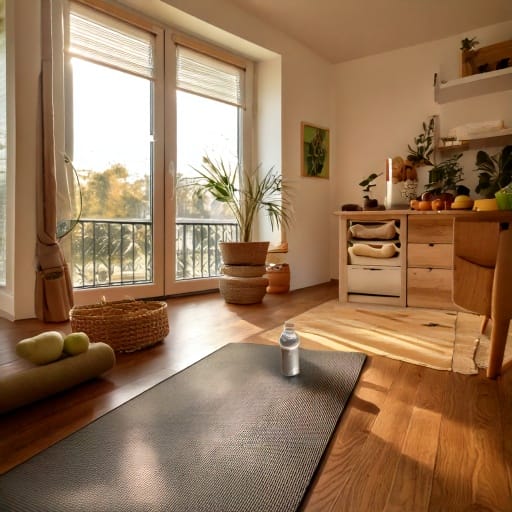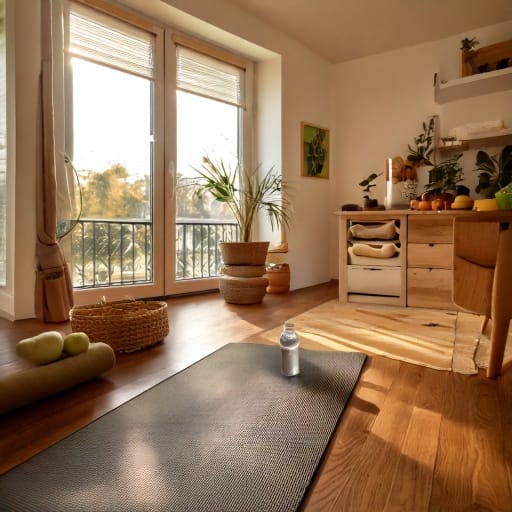
If you’ve ever blamed yourself for failing to stick to a new routine, you’re not alone. Missed workouts, abandoned meal plans, and forgotten mindfulness practices often get chalked up to a lack of discipline or willpower. But more often than not, the culprit is friction—the invisible resistance that makes doing the right thing feel harder than it needs to be.
Friction can be obvious: a gym that’s too far away, healthy recipes that require specialty ingredients, or a meditation app with a clunky interface. But friction can also be sneaky: running out of clean workout clothes, forgetting to restock nutritious snacks, or keeping your journal on a shelf instead of your nightstand. These seemingly small obstacles add up, quietly derailing consistency and feeding the false belief that you simply “aren’t disciplined enough.”
The good news? You can reduce friction and make good choices almost automatic by tweaking your environment, streamlining systems, and removing unnecessary obstacles.
Recognizing Seen and Unseen Friction
Seen friction is the obvious stuff—the barriers you can quickly identify:
✅ Driving 20 minutes to the gym instead of finding a spot near work.
✅ Scrolling through multiple apps to track food, steps, and sleep.
✅ Keeping your vitamins in a cupboard you rarely open.
Unseen friction is trickier—it lurks in the background and chips away at momentum:
🌀 Storing workout gear in multiple places instead of one grab-and-go spot.
🌀 Buying bulk healthy snacks but not pre-portioning them, making it easier to grab chips instead.
🌀 Relying on motivation instead of automating reminders or scheduling wellness habits.
Ways to Reduce Friction and Make Good Habits Stick
1. Make Healthy Choices the Default
You’re more likely to stick with a good habit when it’s the path of least resistance.
- Keep a water bottle filled and on your desk to avoid forgetting to hydrate.
- Lay out workout clothes the night before or sleep in them for early-morning sessions.
- Prep grab-and-go healthy snacks so they’re just as convenient as junk food.
2. Optimize Your Environment
Design your surroundings to gently nudge you toward better decisions.
- Place your journal or gratitude notebook on your pillow or nightstand, making it easy to remember.
- Keep hand weights by the couch to sneak in strength moves while watching TV.
- Use app blockers or website filters to reduce distractions during focus time.
3. Automate and Batch Small Decisions
Removing the need for constant decision-making reduces mental friction.
- Schedule recurring wellness activities (stretch breaks, meal prep) into your calendar.
- Set up auto-delivery for supplements or healthy groceries.
- Batch cook meals to eliminate the nightly “what’s for dinner?” dilemma.
4. Shrink the Activation Energy
The harder it is to start, the less likely you are to follow through. Make starting easy.
- Commit to five-minute workouts—it’s easier to begin, and you’ll often do more.
- Use a meditation app with a one-tap start button.
- Keep workout shoes by the door, not in the closet.
5. Reduce Friction in Your Mindset
Sometimes, the biggest friction point is internal: perfectionism, self-doubt, or all-or-nothing thinking.
- Embrace B-minus effort—it’s better to consistently do something than occasionally do everything.
- Let go of the need for ideal conditions. A 20-minute walk in regular shoes beats skipping a run because you can’t find your sneakers.
- Build in self-compassion: skipping one day doesn’t mean you’ve failed.
Work Smarter, Not Harder
Reducing friction isn’t about taking shortcuts—it’s about setting yourself up for success. When the path to good habits is clear and easy, consistency becomes second nature. The goal isn’t to develop ironclad discipline but to create systems that make discipline almost irrelevant.
So, instead of trying to push through friction, step back and smooth the path. You might be surprised at how easy it becomes to keep showing up.

